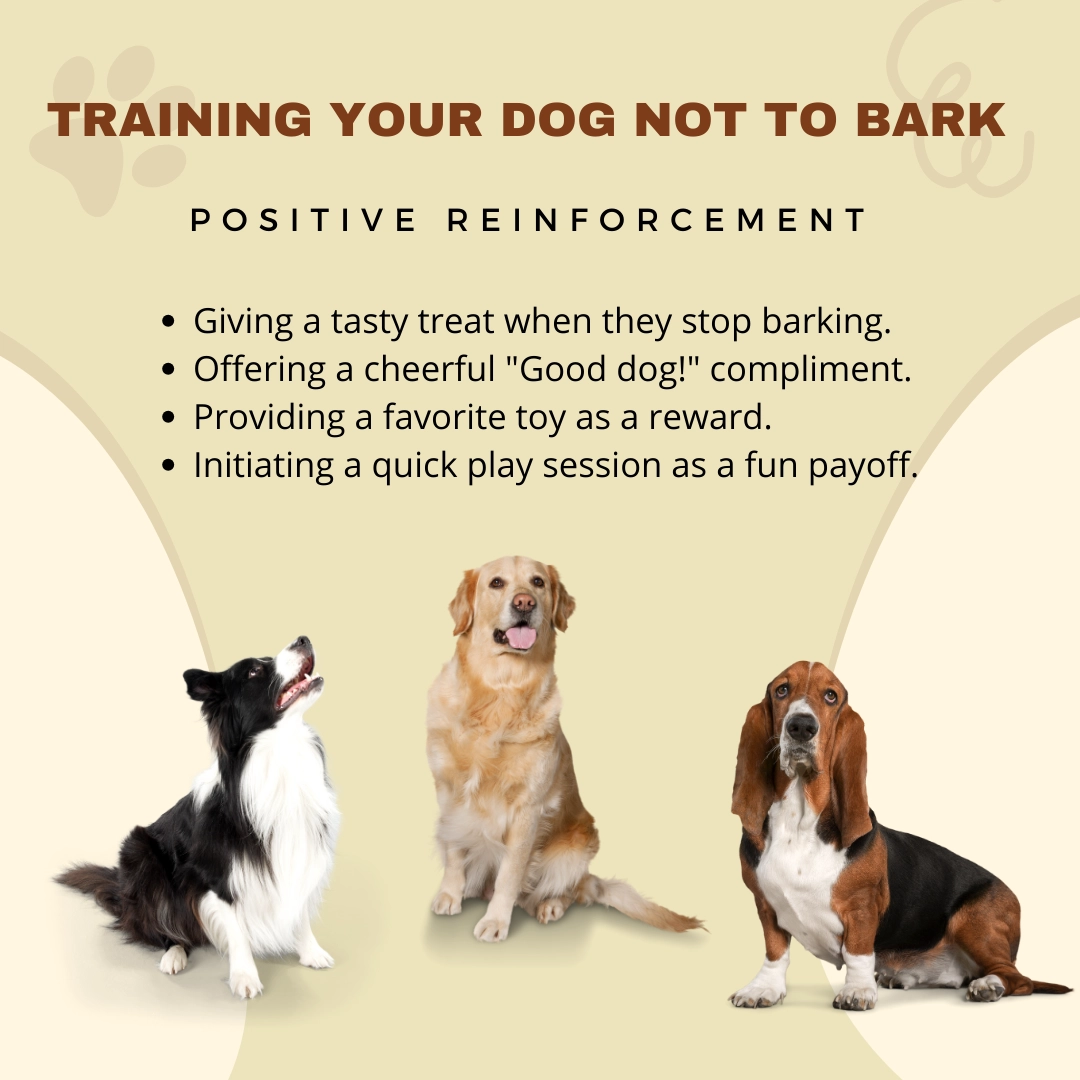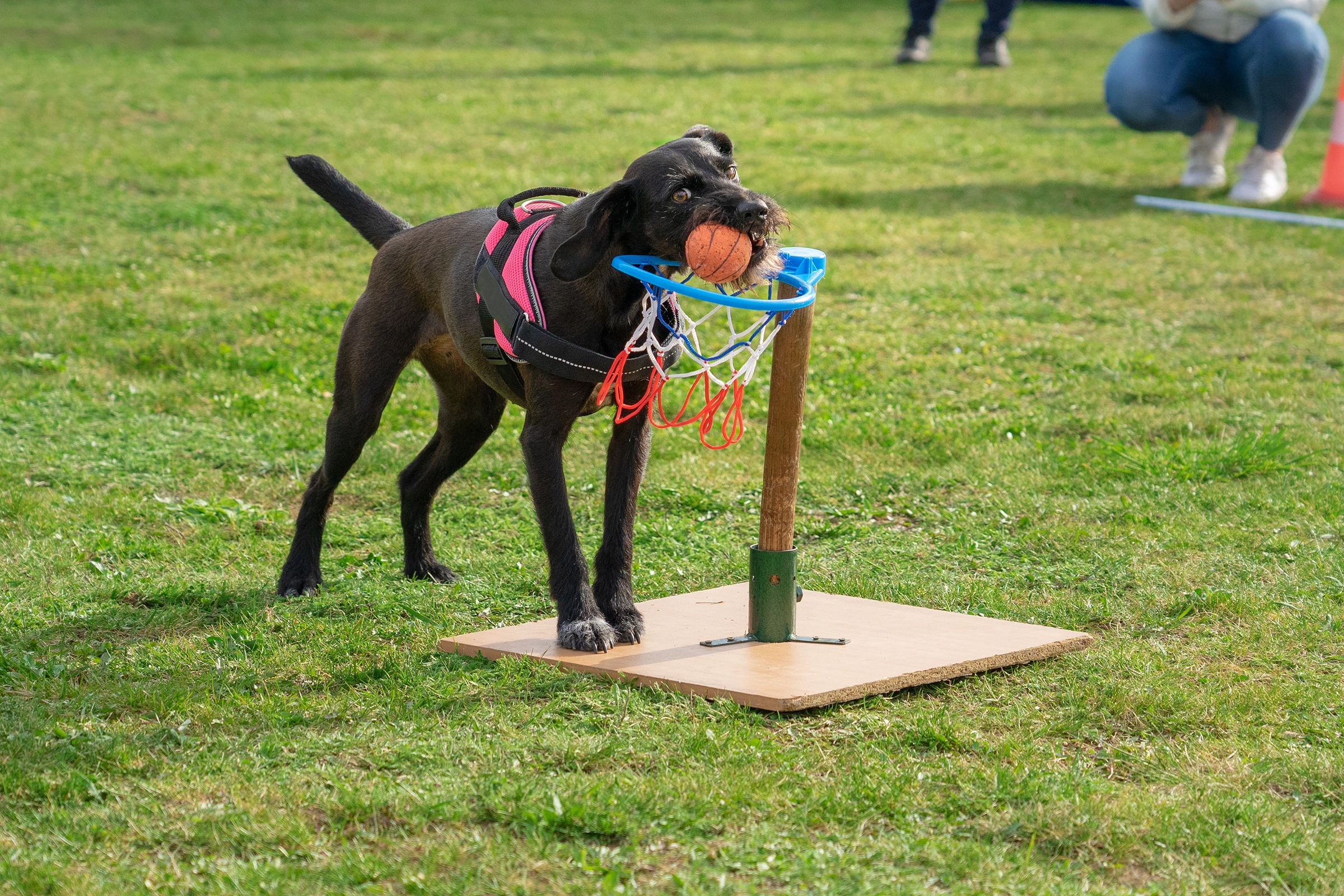This post may contain ads and affiliate links and we may earn a small commission when you click on the links at no additional cost to you. As an Amazon Affiliate, we earn from qualifying purchases. You can read our full disclaimer here.
Ways to Stop Dogs Barking Habit: Tailored Strategies for Every Pup

Finding ways to stop dogs barking is a common challenge many dog owners, including myself, face.
Dogs naturally bark as a form of communication, whether they’re signaling potential danger, expressing excitement, or just being their playful selves.
However, when barking becomes frequent or disruptive, it can pose challenges in our daily lives and for our neighbors.
My experience with Gunner, my Goldendoodle, has taught me a lot about navigating this vocal terrain. Together, we’ll explore the reasons behind our dogs’ enthusiastic vocal expressions and delve into effective techniques to manage and reduce unnecessary barking.
Why Dogs Bark: Understanding the Reasons to Find Ways to Stop Dogs Barking

When searching for ways to stop dogs barking, it’s essential to first understand the why behind their vocalizations. Dogs don’t just bark for the sake of it; they have their reasons, often rooted in their instincts and emotions.
- Communication with Humans and Other Dogs: Dogs are social creatures. They bark to communicate with us and their furry peers. It’s like their version of a chat over coffee or a quick text message. They might be saying, “Hey, I’m here!” or “I want to play!”
- Warning or Alerting to Something Unusual: Ever noticed your dog barking when the doorbell rings or when there’s an unfamiliar noise outside? That’s them doing their job – alerting us about potential intruders or changes in their environment.
- Playfulness, Excitement, or Boredom: Just like a kid squealing with delight on a playground, dogs bark when they’re excited or want to play. Conversely, if they’re bored and craving some action, they might bark to grab your attention.
- Anxiety or Fear: Dogs experience emotions, just like we do. When they’re anxious, scared, or stressed, barking can be their way of expressing discomfort or seeking comfort from their trusted humans.
By comprehending these triggers, we can better address the challenge and implement effective ways to manage our dogs’ barking habits.
You’ll also like our post with advice about fostering a dog with separation anxiety.
Understanding ‘Acceptable’ vs ‘Excessive’ Barking: Key Insights to Discover Ways to Stop Dogs Barking
In our quest to find ways to stop dogs barking, understanding the difference between acceptable and excessive barking becomes essential.
It’s all about balancing respect for their natural instincts with the need for peace and tranquility in our lives.
Sharing the Personal Technique: Allowing Gunner One or Two Barks
With Gunner, my Goldendoodle, I’ve found a middle ground. He’s permitted one or two barks, especially if he’s alerting me to something like the sight of a neighbor’s dog.
It’s a technique that respects his natural instinct to communicate while also setting clear boundaries. We all need a little space to express ourselves, and this approach provides just that for Gunner.
Recognizing the Thin Line Between Natural and Nuisance Barking
Dogs will naturally bark—it’s in their DNA. But when that barking turns constant, seems overly loud, or feels out of character, it’s a sign that we need to pay attention.
Prolonged barking can sometimes hint at distress, boredom, or health concerns. Identifying this nuance ensures we’re addressing the real issues behind the noise, leading us toward more effective, tailored solutions.
By truly listening to our dogs and discerning their barking patterns, we can cultivate a harmonious environment where both pets and their owners feel acknowledged and at ease.
Training Techniques to Gently Curb Barking: Discovering Ways to Stop Dogs Barking with Kindness
Addressing the challenge of excessive barking with gentle techniques can lead to more positive outcomes for both dogs and their owners.
Let’s take a look at some tried-and-true methods that prioritize kindness and understanding.
Positive Reinforcement

Positive reinforcement revolves around the principle of rewarding desired behaviors. Whenever your dog displays the behavior you want—like staying quiet on command—they receive a reward, making them more likely to repeat that behavior in the future.
Examples of Positive Reinforcement:
- Giving a tasty treat when they cease barking.
- Offering a cheerful “Good dog!” compliment.
- Providing a favorite toy as a reward.
- Initiating a quick play session as a fun payoff.
Teaching the ‘Quiet’ Command
Training a dog to understand the “Quiet” or “No barking” command can be transformative. It’s all about consistency, patience, and timely rewards.
Examples:
- Using a firm but gentle tone when saying “Quiet.”
- Rewarding with a treat immediately after they stop barking.
- Using a clicker to mark the desired behavior, followed by a reward.
- Repeating short training sessions regularly for reinforcement.
Diversion Techniques
Diverting a dog’s attention away from the trigger can be a quick and effective solution. By providing an alternative focus, you can prevent or interrupt the barking.
Diversion Examples:
- Tossing a squeaky toy to capture their interest.
- Starting a game of fetch.
- Asking them to perform a known command, like “sit” or “down.”
- Introducing a chew toy or treat-dispensing puzzle.
Desensitization Ways to Stop Dogs Barking Habit
Desensitizing a dog to a particular trigger involves gradual exposure, ensuring they become less reactive over time.
Examples:
- Playing recorded sounds (like traffic or other dogs barking) at a low volume, increasing it gradually.
- Rewarding calm behavior when a known trigger is far away and then decreasing the distance over time.
- Setting up controlled meetings with other dogs in neutral territories.
- Enrolling in a group training class to expose them to various distractions.
Provide Physical and Mental Stimulation Ways to Stop Dogs Barking
Keeping a dog mentally and physically engaged can significantly reduce barking out of boredom or frustration.
- Examples:
- Setting up regular playdates with other dogs.
- Investing in interactive puzzle toys.
- Teaching them new tricks or commands.
- Enrolling them in agility or obedience classes.
With these strategies in your toolkit, you’re well-equipped to address barking challenges in a manner that respects and understands your dog’s needs.
Tools and Products that Can Help: Enhancing Ways to Stop Dogs Barking
In addition to training techniques, there’s a range of tools and products designed to help manage and reduce excessive barking.
These tools, when used responsibly and in conjunction with training, can make the journey smoother for both you and your furry friend.
Anti-Barking Collars Using Vibrations or Sounds
Anti-barking collars can be a controversial topic, but there are humane versions that do not rely on shocks. Instead, they use vibrations or sounds to deter barking.
Types of Vibrations or Sound Tools:
- Collars that emit a gentle vibration as a reminder.
- Devices that release a high-pitched sound only dogs can hear.
- Collars that can be remotely controlled, allowing you to decide when a deterrent is necessary.
- Adjustable collars that can be calibrated according to the dog’s size and sensitivity.
Ways to Stop Dogs Barking with Interactive Toys for Mental Engagement

A mentally stimulated dog is less likely to bark out of boredom. Interactive toys challenge their brains and keep them occupied.
Types of Interactive Toys:
- Puzzle toys where they have to solve a challenge to get a treat.
- Toys that mimic prey movements, engaging their natural hunting instincts.
- Tug toys that require interactive play between you and your dog.
- Ball launchers for a stimulating game of fetch.
Calming Aids for Anxiety-Induced Barking
For dogs that bark due to anxiety, stress, or fear, calming aids can be a game-changer, helping them relax and feel more secure.
Ways to Stop Dogs Barking with Calming Aids:
- Sprays infused with pheromones that mimic a mother dog’s comforting scent.
- Diffusers that release calming aromas throughout the home.
- Edible chews formulated with natural ingredients known for their calming properties.
- Wearable items like anxiety wraps or vests that apply gentle pressure.
Incorporating these tools and products into your approach can offer additional support as you work towards creating a more peaceful environment, free from excessive barking.
The Importance of Consistency: A Fundamental Step in Ways to Stop Dogs Barking
To effectively find ways to stop dogs barking, consistency stands out as a pivotal factor. Our canine companions, much like humans, find solace in routines and predictability.
A structured environment, where expectations are clear and consistently met, offers them a comforting sense of security. This, in turn, can significantly mitigate behaviors like excessive barking.
Maintaining a Regular Routine
Dogs inherently look for patterns in their lives. Whether it’s feeding, playing, or resting, they quickly pick up on our habits.
Keeping a regular routine not only aids in their training but also provides them with the predictability that can curb unnecessary vocalizations.
Routine Rituals for Dogs:
- Setting consistent meal times every day.
- Scheduling walks around the same time, preferably during the quieter moments of the day.
- Assigning specific times for play and relaxation.
- Crafting a consistent bedtime ritual, signaling it’s time to wind down.
Ensuring All Family Members Apply the Same Rules and Commands
For a dog, receiving mixed signals can be both perplexing and frustrating. If one family member allows a behavior while another discourages it, your dog can become confused, often leading to increased barking or other undesired behaviors.
Creating a harmonized environment with everyone on board is crucial.
Unified Command Structures:
- Conducting regular family discussions to ensure everyone uses the same commands.
- Designing a reference guide of do’s and don’ts for all family members.
- Gently reminding and correcting each other if discrepancies in training arise.
- Celebrating collective successes when your dog responds well to consistent cues.
With a consistent approach, we pave the way for a harmonious coexistence, reducing the chances of unnecessary barking and fostering a deeper bond with our furry friends.
Understanding Each Dog is Unique: Tailoring Ways to Stop Dogs Barking

Every dog, like every human, has its own personality, preferences, and quirks. This individuality means that while certain techniques might work wonders for one dog, they might not be as effective for another.
Embracing this uniqueness is crucial when trying to curb barking or any other behavior.
Different Methods for Different Dogs
Just as we have varied learning styles and preferences, so do our canine companions. What soothes one dog might agitate another. Being observant and flexible in our approach ensures we cater to each dog’s distinct needs.
Adaptable Training Techniques:
- Using voice commands for one dog while hand signals might be more effective for another.
- Switching between toys or rewards based on the dog’s interest.
- Adjusting the training environment – some dogs might prefer indoors, while others thrive outside.
- Modifying training session lengths based on the dog’s attention span.
Experiment and Observe
It’s essential to try different techniques and closely observe your dog’s reactions. Their behavior will provide valuable clues about what they’re comfortable with and what might be causing stress.
Keys to Observation:
- Monitoring body language during training sessions.
- Noting any changes in behavior or temperament post-training.
- Recording successes and challenges in a diary or log.
- Consulting with a professional if certain behaviors persist.
Patience in the Trial-and-Error Phase
Finding the right method can be a journey filled with trial and error. It’s important to remember that every misstep is an opportunity to learn and adjust. Patience during this phase is not just beneficial—it’s essential.
Embracing Patience:
- Celebrating small victories, no matter how minor.
- Understanding setbacks are part of the learning process.
- Giving your dog ample time to adjust to new methods or routines.
- Seeking support or guidance when faced with persistent challenges.
By recognizing and respecting the uniqueness of each dog, we can find tailored solutions that are both effective and compassionate, ultimately leading to a more harmonious relationship with our beloved pets.
The Final Wrap Up to Ways to Stop Dogs Barking
From harnessing the power of positive reinforcement and teaching vital commands to using specialized tools and ensuring consistent routines, each strategy plays its role in creating a quieter, more harmonious environment.
However, beyond the techniques and tools, the underlying themes that consistently resonate are understanding and patience. Each dog is an individual with its own set of feelings, experiences, and perceptions.
By approaching the challenge with empathy, we not only foster a deeper bond with our pets but also pave the way for more meaningful, lasting results.
-

Coffee Mug – In Dog Coffees I’ve Only Had One
Price range: $11.95 through $14.95 Select options This product has multiple variants. The options may be chosen on the product page
